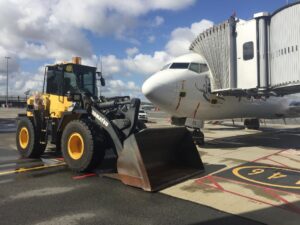Quarterly Asset Remarketing Report - Q2 2020
- Government Stimulus has injected life into many markets. The instant asset write off that was boosted from $30,000 to $150,000, as well as the generous Accelerated Depreciation Deduction have assisted some markets from collapsing.
- Truck Sales rebound slightly for all but heavy-duty trucks in June, which helps lift the falls over the first half of 2020.
- Caterpillar Inc. has announced second-quarter 2020 sales and revenues of $10.0 billion, a 31% decrease compared with $14.4 billion in the second quarter of 2019.
- Tractor sales for April reported a year on year increase of 40% and May reported another solid increase of 30% over the same period in 2019.
- Virgin Australia’s preferred buyer has been announced as US private equity firm Bain Capital. With plans to pare back the airline, cut high-end comforts for flyers and relaunch with about half its existing fleet as early as September. Bain are not guaranteed the sale though with bondholders mounting a challenge.
- Sales of new cars in June 2020 were stronger than expected as buyers returned to showrooms. However, it was still a decline on last year with the 27 consecutive monthly sales slowdown.
- Manufacturers are now worried about stock shortages with global production slowing down due to the COVID pandemic.
Road Transport
Key Point Summary
- The COVID pandemic and economic slowdown caused new truck sales to drop across the country in April and May.
- However, in June we have seen the market for new truck sales come back with a 13.5% increase on the June 2019 figures.
- The heavy-duty truck market was the only segment to continue to decrease in June dropping by 12% on last year.
New Road Transport Market
The road transport market throughout the second quarter continues to be affected by the COVID pandemic and economic slowdown with new truck sales continuing to drop across the country in April and May. However, in June we have seen the market for new truck sales come back with a 13.5% increase on the June 2019 figures, translating to a total of 4,620 total new units sold for the month.
Heavy duty truck market
The new heavy duty truck market dropped 19.6% for the month of April 2020 in comparison to April 2019, with a total of 809 units sold. In May 2020 there was a significant drop of 37.6% in comparison to the same time last year. The heavy duty trucks were the only segment to continue to decrease in the final month of the quarter, with total sales representing a 12% decrease over the same period in the previous year. 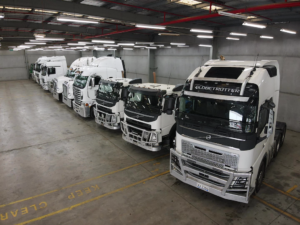 Tony McMullan, the CEO of Truck Industry Council stated, “there is no doubt that the Australian new truck market is in the midst of lows not seen since the GFC, however we have not yet seen truck sales fall below levels seen on 2009/2010 though we are very close”. Kenworth Dealerships are expecting to see a shortage of new trucks over the following two quarters, due to manufacturing workshops globally closing due to the COVID pandemic. This included both the Australian Kenworth manufacturing facility in Melbourne and the Volvo facility in Brisbane, which were shutdown during the early COVID restrictions. This shortage is expected to impact truck prices later in the year as demand outweighs supply in the market.
Tony McMullan, the CEO of Truck Industry Council stated, “there is no doubt that the Australian new truck market is in the midst of lows not seen since the GFC, however we have not yet seen truck sales fall below levels seen on 2009/2010 though we are very close”. Kenworth Dealerships are expecting to see a shortage of new trucks over the following two quarters, due to manufacturing workshops globally closing due to the COVID pandemic. This included both the Australian Kenworth manufacturing facility in Melbourne and the Volvo facility in Brisbane, which were shutdown during the early COVID restrictions. This shortage is expected to impact truck prices later in the year as demand outweighs supply in the market.
Medium duty truck market
The medium duty truck market also saw decreased sales in the second quarter with this segment being the hardest hit in April with a drop of 29.9% on the same period of 2019 and a drop of 29.8% in May 2020 in comparison to the same period in the previous year. June 2020 saw an increase of 12.7% in comparison to June 2019, with a total of 897 new units sold.
Light duty truck market
The light duty truck market has fared better than the heavy and medium duty truck segments in the second quarter, but overall saw a drop in sales in comparison to the results for the same period of 2019. This relative resilience in sales has correlated to the increase in parcel delivery and freight deliveries as a result of the COVID pandemic. In April there was a decline of 15.9% with a reported total of 706 new light duty truck sales. The May results suffered a further decline of 26.2% compared to the same period in 2019. The results for June 2020 in the light duty market rebounded strongly with a 24.3% increase on the same period in 2019, with many consumers opting to take up the end-of-financial year offers available to them and the instant asset write off scheme.
Secondary Road Transport
The secondary road transport market has been strong across the country throughout the second quarter in comparison to the new truck market. With buyers and dealers alike heading to auctions to purchase stock or to upgrade their assets. This has been directly related to the $150,000 instant asset tax write off and with most truck manufacturers putting a hold on operations at the beginning of the COVID pandemic, many buyers have found that there is either not a lot of new stock on the market or long wait times for trucks to be manufactured.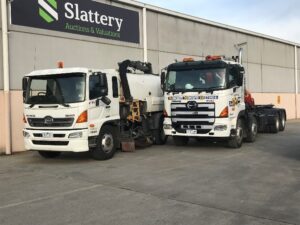
In Queensland, the market for second-hand trucks has been strong across all sectors, with auction clearance rates well up on first quarter results. This is evidenced by the results achieved at the monthly truck and machinery auctions including the sales of a 2007 Mack CLR Superliner Prime Mover with 1,010,497 kms sold for $70,300 and achieving 100% of its retail value, 2019 Hino 300 Series 917 Flatbed Truck with Effer 35/3S Crane and 47,783 kms showing selling for $60,000 and achieving 100% of its retail value and a 2016 Isuzu FH Series Refrigerated Truck with a 181,427 kms showing selling for $130,000 and achieving 110% of its retail value.
The Western Australian market has seen similar results to that of the Queensland market, as auction results for secondary trucks sales have held strong in the second quarter. These results were highlighted in the sale of a 2014 Mack Metroliner with 143,775 kms showing selling for $117,250 and achieving 91% of retail value. The market in Western Australia has seen a few of the larger fleet companies such as Toll Heavy Haulage, Mackay Haulage, K&S and Rivet Mining selling off some of their assets. These surplus units have been well absorbed by the market due to concerns surrounding availability of new trucks and trailers.
In Victoria we have seen a marginal improvement in the prime mover market throughout the second quarter with European trucks being popular amongst consumers. At the monthly truck and machinery auction in May we offered several late model Volvo prime movers for sale including a 2015 Volvo FH540 6×4 prime mover showing 566,661 kms selling for $114,400 this achieved 84% retail value and a 2014 Volvo FM540 6×4 prime mover showing 1,496,226 kms selling for $63,200 and achieving 93% retail value. The Tipper Truck market has remained consistent throughout the quarter. This has been highlighted in the sale of a 2012 Kenworth T409 SAR 6×4 Tipper with 595,000 kms selling for $113,600 under the hammer and achieving 95% retail value. Throughout the state there was an increase in metro contracts and spikes in deliveries to all major supermarkets following the recent outbreak of COVID resulting in an increase in freight movement throughout the state and many contractors reaching out to purchase second hand trucks for immediate starts, thus avoiding the lead times in place for purchasing new trucks.
New South Wales has followed suit with the rest of the country, with sale results for secondary trucks holding strong, which was highlighted at our May Truck & Machinery auction. During this auction we saw several trucks and trailers offered and all assets sold for more than was expected. It can be noted that good quality prime movers that are less than 7 years old have been particularly strong, as seen in the sale of a 2014 Western Star 4800 prime mover that sold for $88,250 with 117,000 kms showing and achieving 100% of retail value. We have also seen strong results in the secondary market for medium sized commercial trucks. This has been highlighted in the sale of a 2015 Iveco Daily 70-20 dual cab tabletop with 149,000 kms showing that sold for $32,500 and achieved 93% of retail value and the sale of a 2015 Iveco Eurocargo 160E28 4×2 tabletop with 103,000 kms showing that sold for $43,750 and achieved 88% of retail value.
The secondary market for trailers in the second quarter achieved good results across the country. In New South Wales, there have been strong results for older flat top trailers, curtainsider B double trailers, heavy haulage trailers and the older dog tipper trailers. As highlighted in the sale of a 2009 Hamelex ST3 Tri-Axle B Double Tipper Trailer Set that sold for $116,500 and achieved 100% of retail value, the sale of a 1995 Maxi-Cube Tri-Axle flat top trailer with a HMF 3622K4D crane that sold for $27,800 and achieved 80% of retail value and a 2004 Drake Tri-Axle Low Loader Trailer that sold for $182,250 and achieved 91% of retail value.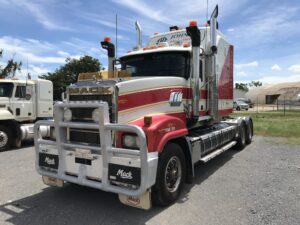
In Victoria, we have seen demand for curtainside trailers increase throughout the second quarter, which has been associated with the current 3-month lead time to purchase these new trailers. As a result of this we saw 2 sets of 2017 Vawdrey High Cube Tautliner B Double Sets complete with Mezzanine Decks that both sold for $169,000 and achieved 100% of retail value.
| Assets | Kms/Hours | Price Achieved | % of retail | State |
|---|---|---|---|---|
| 2016 Isuzu FH Series Refrigerated Truck | 181,427 | $130,000 | 110% | QLD |
| 2010 Tristar ST3 Side Tipper | $58,000 | 110% | QLD | |
| 2011 Hino FG 1628 Sweeper Truck | 215,948 | $176,250 | 100% | VIC |
| 2017 Vawdrey High Cube Curtainsider B Trailer | 401,491 | $94,900 | 100% | VIC |
| 2017 Vawdrey High Cube Drop Deck Curtainsider A Trailer | 402,571 | $74,100 | 100% | VIC |
| 2007 Mack CLR Superliner Prime Mover | 1,010,497 | $70,300 | 100% | QLD |
| 2007 Kenworth T650 Prime Mover | 1,572,848 | $70,000 | 100% | QLD |
| 2019 Hino 300 Series 917 Flatbed Truck with Effer 35/3S Crane | 47,783 | $60,000 | 100% | QLD |
| 2010 Lusty EMS Stag Tipper A Trailer | $48,100 | 100% | QLD | |
| 2014 Western Star 4800FXB 6x4 Prime Mover | 117,000 | $88,250 | 100% | NSW |
| 2006 Kenworth T404 SAR 6x4 Prime Mover | 217,000 | $72,000 | 100% | NSW |
| 2009 Hamelex ST3 Tri- Axle B Double Tipper Trailer Set | 348,000 | $116,500 | 100% | NSW |
| 2012 Kenworth T409 SAR 6x4 Tipper | 595,000 | $113,600 | 95% | VIC |
| 2012 Kenworth T909 Prime Mover | 1,598,291 | $90,000 | 95% | QLD |
| 2018 DAF CF7585 Flatbed Truck | 296,878 | $85,000 | 95% | QLD |
| 2017 Vawdrey VB S3 Curtainsider A &B Set | $92,000 | 95% | QLD | |
| 2012 Howard Porter End Tipper | $30,300 | 94% | WA | |
| 2014 Volvo FH540 6x4 Prime Mover | 1,496,226 | $63,200 | 93% | VIC |
| 2015 Iveco Daily 70-20 Dual Cab Tabletop | 149,000 | $32,500 | 93% | NSW |
| 2014 Mack Metroliner | 143,775 | $117,250 | 91% | WA |
| 2004 Drake Tri-Axle Low Loader | $182,250 | 91% | NSW | |
| 2014 Volvo FM14 Prime Mover | 927,527 | $51,000 | 90% | QLD |
| 2018 Mitsubishi Fuso Fighter 2427 Curtainsider | 34,820 | $91,000 | 90% | QLD |
| 2010 Kenworth C508 6x4 Prime Mover | 281,000 | $166,500 | 90% | NSW |
Mining & Earthmoving
Key Point Summary
- Caterpillar Inc. has announced second-quarter 2020 sales and revenues of $10.0 billion, a 31% decrease on last year.
- Construction has not fared as badly with worldwide figures down 12 per cent in the same period.
- Demand for second-hand equipment has been quite strong through April, May & June with government stimulus packages and imported new equipment being more expensive.
New Sales
The government’s stimulus package has been well received in the earthmoving and mining industry with dealers in this space reporting increased interest, particularly towards the end of the quarter. The federal government has introduced some of the most generous tax incentive measures in history. These incentives were designed to entice businesses to spend and stimulate the economy resulting from the unexpected global health crisis.
Among the two most significant incentives for businesses were the instant asset write off that was boosted from $30,000 to $150,000, as well as the generous Accelerated Depreciation Deduction which allows business owners to deduct up to 57.5 per cent of the new asset in the first year should the asset not qualify for the IAWO. This is helping support the sales of smaller machinery for the construction industry such as sub 5-ton excavators but is having little effect on the bigger machines.
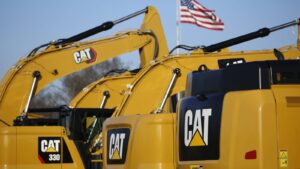 Caterpillar Inc. has announced second-quarter 2020 sales and revenues of $10.0 billion, a 31% decrease compared with $14.4 billion in the second quarter of 2019. The decline was due to lower sales volume driven by lower end-user demand and the impact from changes in dealer inventories. Dealers decreased machine and engine inventories about $1.4 billion during the second quarter of 2020, compared with an increase of about $500 million during the second quarter of 2019.
Caterpillar Inc. has announced second-quarter 2020 sales and revenues of $10.0 billion, a 31% decrease compared with $14.4 billion in the second quarter of 2019. The decline was due to lower sales volume driven by lower end-user demand and the impact from changes in dealer inventories. Dealers decreased machine and engine inventories about $1.4 billion during the second quarter of 2020, compared with an increase of about $500 million during the second quarter of 2019.
Caterpillar sales were affected across all its verticals with sales of equipment in the construction industries vertical down 37% and a 58% drop in profits. The drop in Asia Pacific sales was noted to be due to unfavourable pricing and currency. Sales into the resources sector was down 35% with profit dropping 68% for the quarter. It was noted however that the sales drop was not as severe in the mining sector but due mostly to lower end-user demand in non-residential construction and quarry and aggregates. This speaks to the underlying strength of the Australian mining sector that has been powering along through the COVID affected economy.
Construction has not fared as badly with worldwide figures down 12 per cent in the same period. Sales figures for the other market leaders such as Komatsu and Kubota have also slipped indicating that the COVID pandemic is affecting the entire sector.
Second-hand Market
At the outset of the COVID lockdowns, the market for second-hand earthmoving and mining equipment initially stalled, however Government stimulus including the $150,000 instant write off, new infrastructure projects, and the continuation of existing projects with minimal interruption has seen the market stabilise. Demand for second-hand equipment has been quite strong through April & May, with quality equipment selling well. The drop in the Australian Dollar against the US Dollar also means new imported equipment is more expensive, and this, in turn, makes quality second-hand equipment more attractive. The historically low interest rates have also made the acquisition or replacement of equipment more attractive.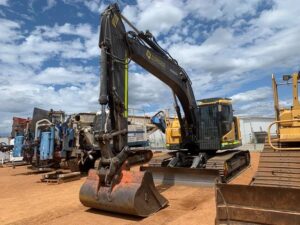
The Australian coal price fell further during June to a low of $52.14, which has been put down to a reduction in global demand due to COVID. The iron ore price continued to rise during June and traded above $100 p/t f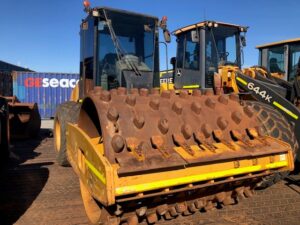 or the month, 30% higher than April’s low driven by demand out of China. This is likely to positively affect the sale of heavy haulage equipment in the mining sector.
or the month, 30% higher than April’s low driven by demand out of China. This is likely to positively affect the sale of heavy haulage equipment in the mining sector.
Earthmoving assets across the board have been strong for this quarter. The main highlights were the sale of a 2012 Hyundai Robex 210LC-9 excavator that sold for 82% of retail value as well as a 2012 Hyundai HL 770-9A wheel loader sold to an end user for the full 100% of retail value. One prominent dealer stated that he has had a booming month all on the back of the government stimulus package and continuing government support for existing and future infrastructure projects.
Existing infrastructure projects such as Badgerys Creek have moved pasted their first planning stage and dirt is now being moved thus creating stronger demand for earthmoving assets. In Victoria, government-funded projects such as the Westgate tunnel, Mordialloc freeway and level crossing removal are driving demand. Over this quarter, a 2010 Franna AT-20 Mobile Crane was sold to a dealer for a strong 81% of retail value. The dealer stated that he was willing to pay a good price for this asset as demand remained strong for these cranes as the civil construction industry remained strong through government stimulus.
| Assets | Kms/Hours | Price Achieved | % of retail | State |
|---|---|---|---|---|
| 1997 Caterpillar D7R Crawler Tractor | 8,549 Hours | $205,000 | 110% | QLD |
| 2009 Caterpillar CS56 Roller | 4,859 Hours | $55,000 | 110% | WA |
| 2016 Fuso Fighter 600 with Concord CML 100 Concrete Pump | 72,776 kms | $90,500 | 100% | QLD |
| 2009 Caterpillar 12M Motor Grader | 8,599 Hours | $143,250 | 100% | QLD |
| 2017 Volvo EXR235 Excavator | 2,467 | $176,800 | 100% | WA |
| 2010 Ditch Witch JT3020AT Horizontal Directional Drill | $36,250 | 100% | NSW | |
| Kemtron Water Reclaiming Unit | $17,900 | 100% | NSW | |
| 2001 Topax Dual Axle Vacuum Trailer | $10,250 | 100% | NSW | |
| 2010 Hyundai HL 770-9A Wheel Loader | 3,800 Hours | $103,000 | 100% | NSW |
| 2017 Kubota SVL75 Posi Track Skid Steer Loader | 583 Hours | $47,000 | 95% | QLD |
| 2009 Caterpillar 303.5CR Tracked Excavator | 2,091 Hours | $26,000 | 95% | QLD |
| 2010 Bomag BW216D-4 Drum Roller | 5,289 Hours | $43,150 | 95% | QLD |
| 2014 Hyundai HL770-9 Wheel Loader | 8,469 Hours | $70,000 | 90% | QLD |
| 2017 Toyota HUski SK9 Skid Steer Loader | 607 Hours | $37,000 | 90% | QLD |
Agriculture
Key Point Summary
- Agriculture, in general, has been less affected by the COVID pandemic.
- Tractor sales for April reported a year on year increase of 40% and May reported another solid increase of 30% over the same period in 2019
- Combine Harvesters sales have stalled with very few sales in the beginning half of the second quarter.
- Contract harvesters are worried that COVID-19 border closures will stop movement between states at harvest which will have dire effects on farmers and the contract harvesters themselves.
New Agriculture Market
As the second quarter for 2020 ends, there have been strong results across the agricultural equipment market with the improvement being driven by improved weather conditions and the increase in the instant asset write off program. Agriculture, in general, has been less affected by the COVID pandemic and demand for commodities also remains strong.
Tractor sales for April reported a year on year increase of 40% and May reported another solid increase of 30% over the same period in 2019. Across the country, we saw huge increases in sales, particularly in the Eastern states, with Victoria seeing a 32% increase over the same month last year. New South Wales was up 38% for the month and Queensland saw a 34% increase. We saw a 13% increase in sales in South Australia, a 21% increase in Tasmania and Western Australia reported a 7% increase for the same period in 2019.
As the quarter came to its close, new tractor sales breached the 2,000-unit mark for the first time since 1981, with a massive 48% increase in sales over June 2019. Across the country we saw tractor sales increase in every state, with New South Wales taking the lead with a 54% increase over the same period in 2019, followed closely by Victoria with a 46% increase and Queensland with a 36% increase.
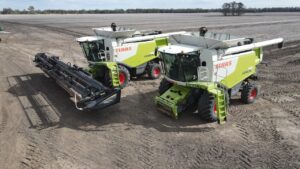
Combine Harvesters sales have stalled with very few sales in the beginning half of the second quarter, however there seems to be some encouraging signs that grain planting activities will increase thus increasing demand for new harvesters. The first half year sales reaching 134 units sold in comparison to the 113 units sold in the first half of 2019. The only barrier to this is contract harvesters are worried that COVID-19 border closures will stop moving between states at harvest. A large fleet of contracted harvesters would normally move equipment and their teams from state to state depending when crops are ready. If the hard border closure between NSW and Victoria remains in place into harvest contract harvesters’ plans will be thrown into disarray.
Baler sales continue to remain strong in this quarter with a 36% increase year to date.
Secondary Agriculture Market
The secondary agricultural equipment market has seen mixed results across the country in the second quarter. In Victoria, limited agricultural assets were offered to the market, however enquiries for tractors, have increased in the second half of the quarter and demand for the equipment has remained steady. During our May Truck & Machinery auction we offered a John Deere 6320 4WD Tractor with grass fairway tyres with 6,732 hours showing which sold for $23,100 and achieved 80% of retail value.
In Queensland, we have seen all secondary agricultural assets perform well at auction even machines that are older and less productive. Evidencing this was the sale of a 1994 John Deere 8200 Tractor with 9,950 hours that sold for $32,400 and achieved 100% of retail and a 2011 Deutz410 Agrofarm Tractor with 1,529 hours showing that sold for $41,550 and achieved 100% of retail value.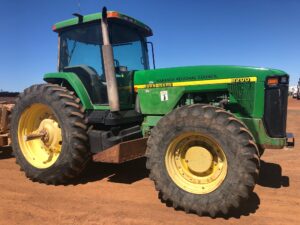
In Western Australia, it was noted that farmers in the grain growing region had a strong harvesting season, and with the instant asset write off, many upgraded to new equipment rather than used equipment.
| Assets | Kms/Hours | Price Achieved | % of retail | State |
|---|---|---|---|---|
| 1994 John Deere 8200 Tractor | 9,950 | $32,400 | 100% | QLD |
| 2011 Deutz 410 Agrofarm Tractor | 1,529 | $41,550 | 100% | QLD |
| 1985 Haulmakr Bogie Stock Crate Trailer | $15,600 | 100% | QLD | |
| 1996 John Deere 6600 4x4 Tractor | 2,223 | $13,000 | 95% | QLD |
| Napier Grasslands 40 Foot Cultivator Air Seeder | $4,000 | 90% | QLD | |
| New Holland TX66 Combine Harvestor | 2,779 | $6,500 | 90% | QLD |
| 2013 John Deere 620 4WD Tractor | 6,736 | $23,100 | 80% | VIC |
Aviation
The aviation sectors worldwide continue to feel the full economic effects of the COVID Pandemic. Since our last update, Virgin Australia entered Voluntary Administration. Virgin Australia’s preferred buyer has been announced as US private equity firm Bain Capital. With plans to pare back the airline, cut high-end comforts for flyers and relaunch with about half its existing fleet as early as September. Airport lounges and expensive food will be among the first features to go at Virgin Australia 2.0. Bain are not guaranteed the sale though with bondholders mounting a challenge.
International passenger flights have been grounded, and a significant number of aircraft around the world have been sent for deep storage. Qantas has also expedited the retirement of all Boeing 747 aircraft. Domestically, flight schedules are starting to increase throughout Australia, however international travel is not expected to return until late 2020 / early 2021. Qatar and Singapore recently announced the restart of all flights to major Australian capital cities.
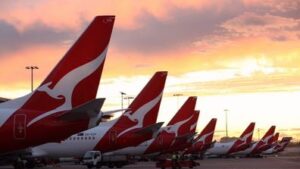 Aviation companies with a tourism focus are continuing to be the hardest hit sector of aviation in Australia. As travel restrictions begin to ease throughout Australia, and the eventual opening of borders, domestic travel is expected to assist with these companies returning to trade. RPT services to remote indigenous communities remain restricted, and flight schedules reflect this. In the event of a second wave of COVID and a return to restrictive containment measures, small aviation businesses will certainly feel the effects.
Aviation companies with a tourism focus are continuing to be the hardest hit sector of aviation in Australia. As travel restrictions begin to ease throughout Australia, and the eventual opening of borders, domestic travel is expected to assist with these companies returning to trade. RPT services to remote indigenous communities remain restricted, and flight schedules reflect this. In the event of a second wave of COVID and a return to restrictive containment measures, small aviation businesses will certainly feel the effects.
Flight schools are still operating under caution, and private aircraft are slowly returning to the skies, and we are continuing to field inquiries on the effect the pandemic is having and expected to have on the secondary market. Due to the limited sales, and the uncertainty of the international market, the true extent or discount following this pandemic is yet to be quantified. Moving forward we expect aircraft will transact if they are priced accordingly, and later this year the picture will become clearer
Automotive
Key Point Summary
- Sales of new cars in June 2020 were stronger than expected as buyers returned to showrooms but still down on last year.
- Manufacturers are now worried about stock shortages with global production slowing down due to the COVID pandemic.
- June was still the 27th consecutive monthly sales slowdown, the longest slump since the Global Financial Crisis a decade ago.
New Car Sales
Australian new-car sales performed significantly better than expected in June, however, the industry is still cautious about the recovery from the COVID slowdown which saw the weakest May result in 23 years and the steepest April decline in at least 30 years. With the second wave of lockdowns in Victoria and border closures the industry is looking at some further tough times.
Figures released by the Federal Chamber of Automotive Industries show a total of 110,234 vehicles were reported as sold in June, a 6.4 per cent decline compared to June 2019 sales – a much smaller decline than in May (35.3 per cent) and April (48.5 per cent). This does show signs of the fabled V shape recovery that the industry was hoping for. However, while promising, June was still the 27th consecutive monthly sales slowdown, the longest slump since the Global Financial Crisis a decade ago.
The better than expected June result was largely due to the easing of COVID lockdown restrictions across the country, the Federal Government’s instant asset tax write-off scheme, easier access to super funds and buyers returning to the market after getting cold feet in April and May. Ute and van sales helped contribute to June’s strong finish, with the Light Commercial Vehicle segment up 8.6 per cent. SUVs – while still down – only saw a 2.9 per cent decline versus the 6.4 per cent average drop across the entire market.
 According to a recent report by market research expert, ACA Research, nearly a third of SMEs with business vehicles surveyed intend to use the Instant Asset Write-Off and a quarter intend to use the Accelerated Depreciation Deductions to purchase new vehicles for their operations. ACA said these numbers are likely to increase as another quarter are undecided at this stage.
According to a recent report by market research expert, ACA Research, nearly a third of SMEs with business vehicles surveyed intend to use the Instant Asset Write-Off and a quarter intend to use the Accelerated Depreciation Deductions to purchase new vehicles for their operations. ACA said these numbers are likely to increase as another quarter are undecided at this stage.
When heavy commercial vehicles are deducted from the figures, 105,612 new passenger cars, SUVs, utes and vans were sold in June, marking a 7.2% decline on 2019 figures. Sales for the first six months of 2020 totalled 442,415, down 20.2% (from 554,466) compared to the same period last year.
Taking a peek into this current quarter the COVID pandemic is continuing to have a heavy impact on the industry as demonstrated by the July sales figures which show new-vehicle registrations fell 12.8 per cent in July to place the total market down 19.1 per cent for the year.
Toyota, the market leader for the past 17 years in a row, accounted for one in five of all new vehicles reported as sold, as its market share slipped from 26.5% in April, and 24.2% in May, to 20.7% in June. Toyota finished comfortably ahead of Mazda and Hyundai. In another upset, Volkswagen ranked sixth outright in June for the second month in a row.
Top 15 car brands in June 2020
- Toyota: 22,867, up 7.9 per cent
- Mazda: 9420, down 12.8 per cent
- Hyundai: 7737, down 22.6 per cent
- Ford: 7624, up 6.6 per cent
- Mitsubishi: 7419, down 16.6 per cent
- Volkswagen: 5737, down 1.0 per cent
- Kia: 5727, down 20.5 per cent

- Mercedes: 4437, up 31.4 per cent
- Nissan: 4260, down 22.7 per cent
- Subaru: 3775, down 18.2 per cent
- Honda: 3423, down 45.1 per cent
- BMW: 3307, up 32 per cent
- Isuzu: 2656, down 11.4 per cent
- Audi: 2027, up 84.6 per cent
- Holden: 1912, down 60.3 per cent
Top 10 cars sold in June 2020
- Toyota HiLux: 6537, up 21.1 per cent
- Ford Ranger: 5329, up 9.9 per cent
- Toyota Corolla: 3008, down 4.1 per cent
- Mitsubishi Triton: 2721, up 1 per cent
- Toyota RAV4: 2632, up 7.5 per cent
- Mazda CX-5: 2530, down 13.1 per cent
- Toyota Prado: 2374, up 16.1 per cent
- Hyundai i30: 2368, down 29.2 per cent
- Hyundai Tucson: 2206, down 5.9 per cent
- Kia Cerato: 2016, down 28.8 per cent
Secondary Car Sale
Initially, the effect of the COVID Pandemic on the second-hand market saw a significant reduction in enquiry and values in April and May however through May and June dealers have re-entered the auction market with enthusiasm and prices have jumped with lower supply and increased demand. We estimate that values in the secondary market have increased 10-15% from pre-COVID levels since recovering in May.
Demand for second-hand cars has been incredibly strong resulting from, among many drivers, access to super payments, more frugal choices from consumers in buying second hand rather than new, concern of commuters from travelling on public transport and government tax stimulus measures.
New car stock arrivals from overseas have been restricted and as a result stock levels within dealerships are low. Dealerships who have held floor stock over Q2 during the COVID period also released EOFY incentives in efforts to secure sales and move aged stock. Another interesting number reflecting the change in supply and demand is the national listings for used vehicles on Carsales.com, which generally sit between 220,000 – 240,000 units nationally. This number has declined to 161,000 as of this week, demonstrating a significant shortage of supply.
Interest in late model vehicles in particular has increased as dealerships return to some level of normality and efforts to restock car yards is now underway with commercial buyers for dealerships now granted authorisation to make purchases.
Wholesale buyers are reporting a major shortage of vehicles, which has translated to very high clearance rates with recent car auctions in Victoria clearing 97% of the stock offered for sale under the hammer. The prestige market has held strong in Victoria with vehicles commanding prices in excess of $100,000 selling well during May and June. Tthis was highlighted with the sales of a Range Rover Autobiography selling for 140,900 which is 110% of the retail price.
The commercial vehicle sector has maintained its strong values. This is not surprising as 3 of the top 4 new cars now being sold in Australia are dual-cab utes. An example of how strong prices are is the sale in QLD of a 2017 Toyota Landcruiser Workmate Single Cab Ute showing 40,705 kms for $51,954, which is 110% of the retail price.
 The various market factors that have driven prices higher may not necessarily be sustained especially with access to super funds no longer being available so we expect to see some volatility in car prices over the next few months as the supply-demand equation stabilises.
The various market factors that have driven prices higher may not necessarily be sustained especially with access to super funds no longer being available so we expect to see some volatility in car prices over the next few months as the supply-demand equation stabilises.
| Assets | Kms/Hours | Price Achieved | % of retail | State |
|---|---|---|---|---|
| 2017 Toyota Landcruiser Workmate | 40,705 | $51,954 | 110% | QLD |
| 2016 Audi A3 | 82,478 | $20,200 | 106% | WA |
| 2018 Toyota Hilux SR5 | 101,450 | $36,100 | 100% | QLD |
| 2019 Toyota Hiace LWB | 15,406 | $35,500 | 100% | QLD |
| 2011 HSV Clubsport R8 | 231,368 | $20,451 | 100% | QLD |
| 2018 Haval H9 Wagon | 14,050 | $29,000 | 100% | QLD |
| 2018 Holden Colorado LT (4x4) | 88,705 | $32,000 | 98% | VIC |
| 2012 Toyota Prado Kakadu | 122,285 | $37,500 | 98% | WA |
| 2016 Toyota Hilux SR (4x4) | 7,234 | $40,700 | 95% | VIC |
| 2018 Toyota Landcruiser GXL (4x4) | 30,192 | $72,100 | 95% | VIC |
| 2017 Mercedes Benz GLA 180 | 41,797 | $29,050 | 95% | QLD |
| 2018 Toyota Landcruiser GXL | 45,577 | $73,100 | 95% | QLD |
| 2016 Ford Ranger Wildtrak | 83,631 | $38,100 | 95% | WA |
| 2018 Jeep Trackwak | 22,472 | $94,100 | 94% | NSW |
| 2016 BMW M3 | 35,334 | $70,400 | 93% | NSW |
| 2018 Jaguar XE 20T Prestige | 19,241 | $35,450 | 91% | VIC |
| 2017 Ford Ranger Wildtrack | 58,182 | $41,000 | 91% | NSW |
| 2018 Hyundai iLoad 3S | 25,914 | $27,859 | 90% | QLD |
Slattery Asset Advisory
During the second quarter, we have seen demand for valuations hold steady as the COVID pandemic continues to impact the Banking and Finance Industry through moratoriums and tighter lending practices. More than ever is the traditional ‘Supply and Demand’ concept influencing valuations and market values throughout the second quarter due to the demand for certain types of assets, specifically in the building and construction industry.
This can be seen in the example of a valuation that was recently conducted on some Glazier assets that were subsequently sold at Auction. A few items achieved 20% -40% above valuation as the buyers were keen to use the assets ‘as is’ and put them to use straight away.
As the Financial year end approached, we saw many clients reaching out seeking our services for financial reporting purposes and have assisted some clients in updating their asset values for insurance purposes to achieve a reduction in premiums.
